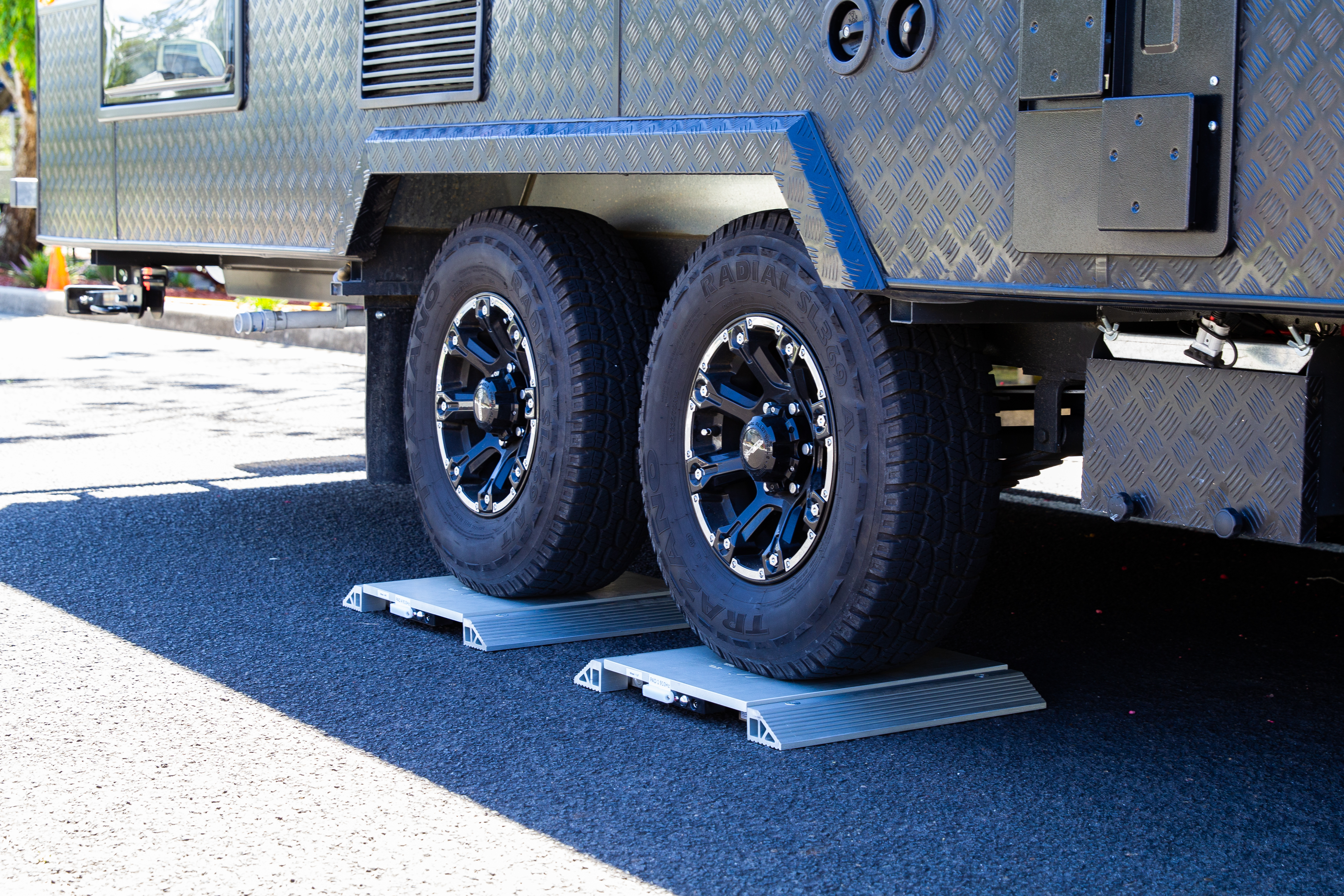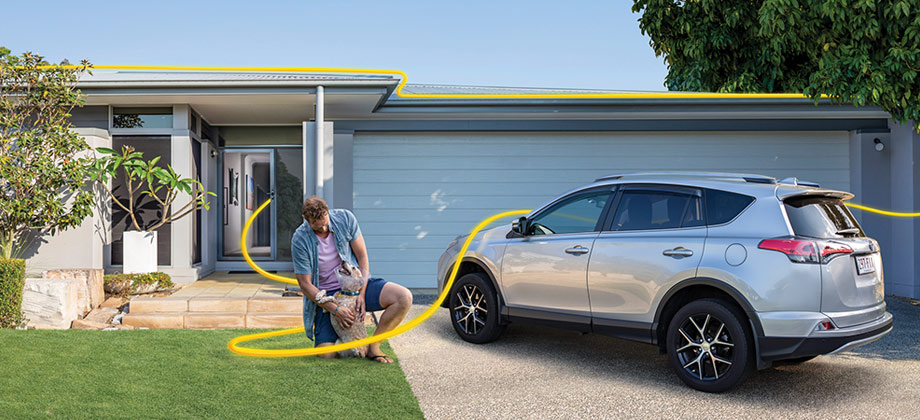What you need to know about trailer and tow vehicle specifications
Failure to abide by the towing regulations, including maximum loads, may result in a fine, or in the case of an accident, refusal of the insurance claim, and the possibility of further legal action.
Important: The following information is based on Queensland regulations. Other States and Territories may have slightly different rules.
Rules about what you can tow
Vehicles with a Gross Vehicle Mass (GVM) of less than 4.5 tonnes can tow a trailer with an Aggregate Trailer Mass (ATM) up to:
The lesser of:
- The tow vehicle manufacturer’s recommended maximum towing mass,
or, - The tow vehicle’s towbar rating
When towing capacity is not specified
If the vehicle manufacturer has not specified a towing capacity, for vehicles built before 1992, Queensland regulations allow the towing of a trailer:
One and a half times the un-laden mass of the towing vehicle, if the trailer is fitted with brakes or,
If the trailer is not fitted with brakes, 750kg Gross Trailer Mass (GTM)Trailer mass terminology explained
ATM, GTM and Tare Weight
The maximum weight of a trailer is specified as either its Aggregate Trailer Mass (ATM) or Gross Trailer Mass (GTM).
- ATM is the combined weight of the trailer and its full load when it is not coupled to a tow vehicle.
- GTM is the weight of the fully loaded trailer imposed on the trailer’s axle when it is coupled to the tow vehicle.
GTM will always be less than ATM as some of the trailer weight is transferred to the tow vehicle when the trailer is coupled to it.
All new trailers, including those that are home made, built since August 1989 are required to have a plate listing, amongst other things, the trailer’s Aggregate Trailer Mass. Some trailer plates will also show the Tare Weight (the un-laden weight of the trailer) and the GTM.
Trailers built before August 1989 may carry little or none of this information.
Your tow vehicle must have sufficient capacity to tow the fully laden trailer.
Trailer Ball Load
Ball Load is the amount of weight the fully laden trailer imposes (vertically) on the tow bar of the tow vehicle. Trailer Ball Load is not a specification defined by the trailer manufacturer – it is the actual weight imposed on the rear of the tow vehicle and as such is a function of the trailer’s axle position and the manner in which it is loaded.
While there is no requirement to list a trailer’s Ball Load, it can be measured at a weighbridge by disconnecting the fully laden trailer from the tow vehicle and resting only the trailer’s draw bar (via the jockey wheel) on the scales. Alternatively, some caravan dealers have special ball mass scales for this purpose.
Some caravan plates show Ball Load at Tare. This is the ball load when the caravan is empty. It is not helpful in determining the ball load of the laden caravan.
Ball Load can be measured at a weighbridge by disconnecting the fully laden trailer from the tow vehicle and resting only the trailer’s draw bar (via the jockey wheel) on the scales. Alternatively, low cost ball mass scales are available for this purpose.
Payload
Payload is the trailer’s carry capacity. It’s the difference between its Tare Weight (un-laden weight) and its ATM. Payload is important for all trailers, however it is critical to campers and caravans, many of which have quite limited carrying capacity to start with. Modifications and additions to the trailer can very quickly eat into its carrying capacity and result in an overloaded trailer, or the inability to legally carry necessary items.
Tow vehicle specifications:
Towing capacity
The maximum trailer load will be specified to ensure the combination is safe, controllable, and that it will not significantly shorten the life of the vehicle's body and mechanical components.
Vehicle handbooks generally provide the following information:
- the maximum weight of the trailer without brakes, that can be towed by the vehicle,
- the maximum weight of a trailer with brakes, that can be towed by the vehicle,
- the maximum tow ball load, and
- any conditions (such as speed) relating to towing or additional equipment required
The maximum towing weight specified by the vehicle manufacturer equates to the trailer’s ATM. However some vehicle manufactures confuse matters by specifying towing capacity in terms of Gross Trailer Weight, which is another way of saying it, refers the trailer’s Aggregate Trailer Mass. Do not confuse the term Gross Trailer Weight with Gross Trailer Mass as in this regard they are different things. ATM and GTM are defined above as well as in the relevant legislation.
Tow ball load
Tow Ball Load is the proportion of the trailer weight that is applied (vertically) to the rear of the tow vehicle. A vehicle’s Ball Load specification will be found in the vehicle’s handbook and will be listed as a weight in kilograms or as a percentage of the trailer’s ATM.
Ball Load specifications are often around 10% of the maximum towing mass specification however, this isn’t always the case – some may have a lower Ball Load of around 5% while others are more than 10%.
GCVM
Gross Combination Vehicle Mass (where given) is the maximum allowable weight of the trailer, tow vehicle and the load (including passengers) in the tow vehicle and trailer.
Tow vehicle Axle Load
A Maximum Axle Load specification is sometimes given for vehicles, such as utilities, that are capable of carrying a load over the rear axle in addition to the load imposed by the trailer (the Ball Load).
Towing speeds
Some vehicle manufacturers impose reduced speed limits when towing. This may be across the board or it may be when the weight of the trailer exceeds a certain limit. Where such limits apply, this typically means that the vehicle is restricted to a maximum of approximately 80km/h, so it’s important to factor this into your purchase decision, particularly if you are intending to tow a trailer long distances.
Tow bar specifications
All tow bars made from 1992, and many made before, will have a plate attached that lists the maximum towing weight, the maximum ball load, and the make and model of vehicle the bar was designed for.
The vehicle’s specifications will always be the maximum the vehicle can legally tow, even if the tow bar is rated for a higher load. However if any of the tow bar specifications are lower than those given for the vehicle, the tow bar’s specification will override the vehicle’s specifications.
It is common to find tow bar specifications that differ from those given for the vehicle. This usually occurs where the bar is made for a number of different models in the range, or where light and heavy-duty tow bars are offered for the vehicle.
Trailer information, design rules and legalities
Vehicle Standards Bulletin 1 is the 'rule book' for Australian trailer builders. It contains all the information you need to know about light trailer dimensions, lighting, brakes and much more.Where to find towing specifications
Trailer
The trailer ID plate will list at least the ATM and sometimes more information.
For trailers without an ID plate check the registration papers.
Note that additions and modifications can greatly affect trailer weights and we would always recommend confirming specifications by having the trailer weighed.
Tow vehicleOwner’s manuals will contain the vehicle’s towing specifications. Be warned that towing specifications can change from model to model, year to year and even within the same model range. If you have any doubt about the accuracy of the information, we recommend confirming it with the vehicle’s manufacturer.
Tow bars
The tow bar specification plate will contain the necessary information.
For older, unmarked towbars a towbar manufacturer or installer may be able to assist.How to use the information
Once you have the necessary information, use this checklist to help with the decision making.
Things to note
The information in this article has been prepared for general information purposes only and is not intended as legal advice or specific advice to any particular person. Any advice contained in the document is general advice, not intended as legal advice or professional advice and does not take into account any person’s particular circumstances. Before acting on anything based on this advice you should consider its appropriateness to you, having regard to your objectives and needs.

